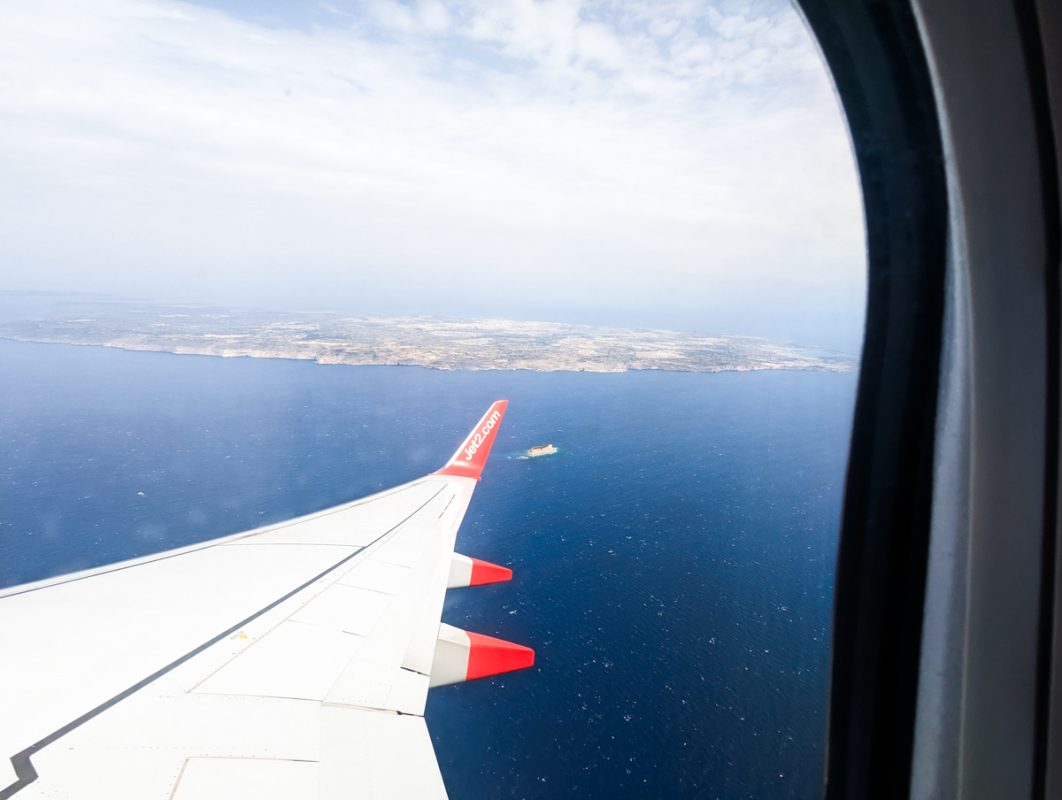Are you contemplating Malta in March? Read on, as we go into the best reasons to see the country during this month!
March is a month of limbo.
No longer cloaked in winter’s chill, yet not quite basking in spring’s full glow, it’s one of those months that seems to drag on forever as you wait for warmer, brighter days.
But in Southern Europe, March isn’t usually chilly. In fact, mild temperatures can make it the optimum time to head to places like Malta.
An unassuming nation, one of the smallest in the world, parked in the Mediterranean just below Sicily, Malta’s drenched in sunshine for 300 days per year.
While sunshine is predictably on the cards, the temperatures haven’t quite soared yet (Malta can reach 40C in the summertime), making this month and idyllic time to explore the great outdoors.
But it’s not all about the weather – in fact, there’s a world of reasons why Malta in March should be topping your list.
So, if you’re thinking of visiting Malta in March, read on for our full analysis of why you should favour this month above others!
Reasons to visit Malta in March
Exemplar weather, affordable prices and plenty of local festivals make Malta in March worth adding to your travel bucket list. Here are our favourite reasons to visit the tiny nation in late winter!
1. Perfectly Temperate Weather

Unlike the blazing heat of summer, March offers a mild climate, perfect for spending time outdoors.
With average daytime temperatures around 17°C, you’ll soak in the warmth of the sun without the intensity, so you can sightsee to your heart’s content without constantly seeking out the nearest air-conditioned refuge!
Evenings cool down to about 10°C, so you won’t need to worry about seeking out accommodation with air conditioning for when you sleep.
But you’ll never get too cold.
Snow is virtually unheard of in Malta, although it does happen every so often in midwinter; from my research, I don’t think it’s ever been recorded in March!
Keep in mind, though, that it does occasionally rain in Malta in March.
Far from the relentless downpours back home, these showers usually amount to nothing more than a brief, light watering of the vivid green landscapes that March brings out in Malta.
2. Sea swimming is just about possible
Fancy taking a dip?
The Med is certainly on the brisk side but not entirely unswimmable, especially if you’re used to colder water swimming.
Some hotel pools are heated and open in March, as well.
3. Fewer Crowds
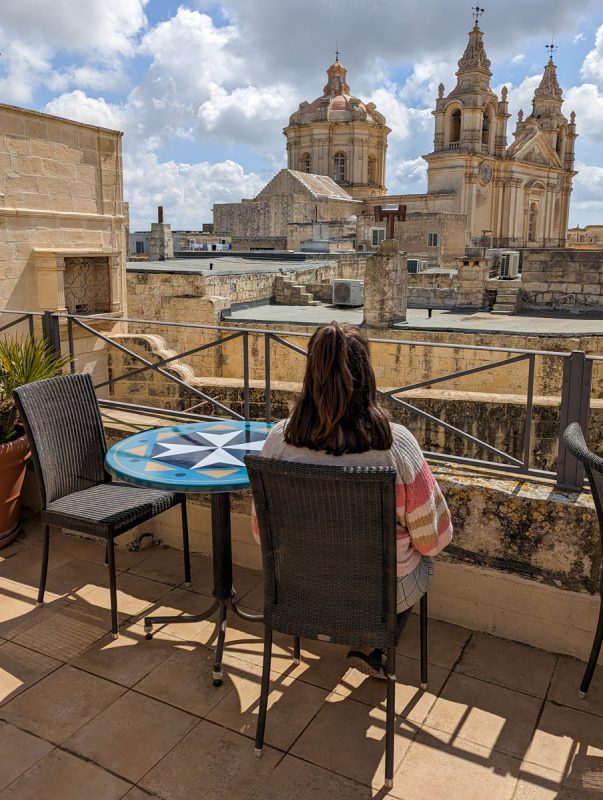
In March, the typically buzzing streets of Valletta and the often bustling beaches of Mellieha Bay remain calm and laid back, as they gradually come out of winter month hibernation.
This time of year offers the chance to explore Malta without jostling the elbows of fellow tourists.
There’s a certain tranquillity that comes with this off-peak season, allowing you to experience the island at a suitable pace.
Valletta’s the perfect winter city break, and you can use the capital as a base to explore the island some more.
4. Attend the feast of St. Joseph
But March isn’t all about finding solitude on the streets of Mdina.
In fact, there are some unmissable local events and festivals throughout the month as well.
First up, there’s the Feast of St. Joseph.
Celebrated on the 19th of March, this public holiday is quite a spectacle.
Maltese locals honour Joseph, Jesus’s “earthly” father in a series of church services and religious processions.
Localities, particularly Rabat, host community feasts, musical concerts, and even fireworks, creating an atmosphere that’s festive and community-oriented.
For any traveller, this is a golden opportunity to engage with the local culture on a deeper level.
5. See wildflowers in Bloom
With winter bidding goodbye, the islands start to fluoride with wildflowers, with the Maltese countryside bursting into colour.
You don’t have to venture far to witness this natural spectacle.
From a casual stroll along country lanes to the more adventurous Dingli Cliffs hike, expect a spread of colourful flora spread out before you.
6. Enjoy affordable prices

Malta is a more affordable destination than much of Western Europe, and in March it’s even more of a bargain.
Flights and accommodations haven’t yet hit their summer highs, so you can snag some excellent deals – which means extra money for excursions or fancy seafood dinners.
Another money-saving tip for Malta would be to enjoy pastizzi for lunch.
A flaky pastry encasing ricotta cheese or mushy peas, pastizzi to Malta are Cornish pasties to Cornwall – they’re everywhere, and they’re delicious.
7. Take part in outdoor activities

March’s mild weather means that the island’s ideal for outdoor activities – and the island has an expansive range of them.
Fancy a countryside walk? How about some rock climbing? Or maybe you’re in the mood for a casual bike ride? Malta’s got you covered.
You can even go scuba diving in Malta in March – but you will need a thick wetsuit or drysuit!
I tackled the Dingli Cliffs to Blue Grotto hike on one of my days in Malta.
Offering a spectacular showcase of Malta’s natural beauty, this hike encompasses views over the Med, the ancient site of Hagar Qim and tranquil farmland.
Check out the YouTube video I created about this hike!
8. Go birdwatching
Late March is the migration period in southern Europe, making the island a bird watcher’s paradise.
The geographical location of Malta in the central Mediterranean flyway makes it a significant stopover for migrating birds journeying between Europe and Africa.
So, whether you’re an amateur ornithologist or are just keen to see some animal life, prepare to spot everything from honey buzzards to European bee-eaters gracing the Maltese skies!
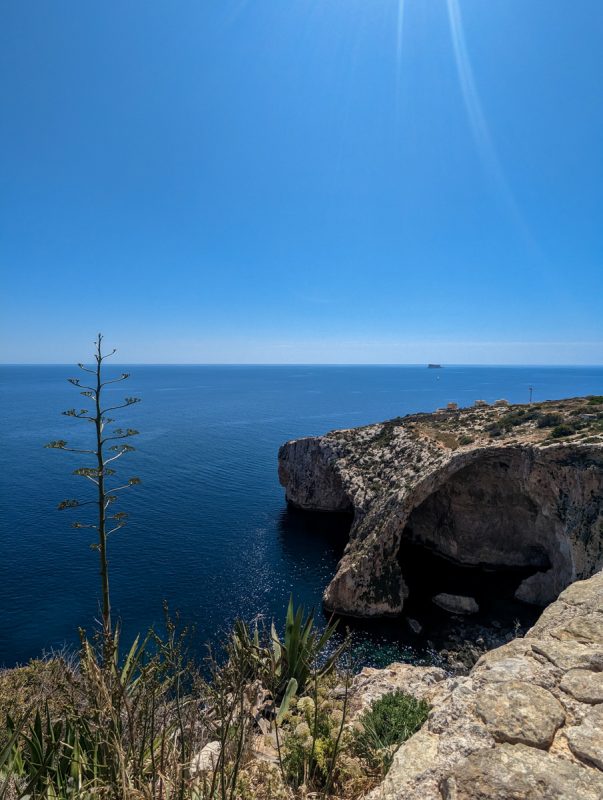
9. Try Traditional Lenten Food
March in Malta is the traditional Lent period; which many throughout the island observe, as it’s a predominantly Catholic country. And the gastronomy reflects this!
Say hello to unique and sumptuous dishes that you won’t typically find at other times of the year.
A must-try is Kwareżimal, a traditional Lenten biscuit that manages to be both sweet and nutty, despite adhering to the Lenten no-dairy rule.
For something savoury, ‘Qagħaq tal-Appostli’ or Apostles’ Rings – bread rings filled with olives, anchovies, and capers – make for a flavourful snack.
You can find these specialities in local bakeries and markets throughout Malta, such as the open-air Marsaxlokk Market or the many bakeries strewn across Valletta.
10. Join in Easter preparations
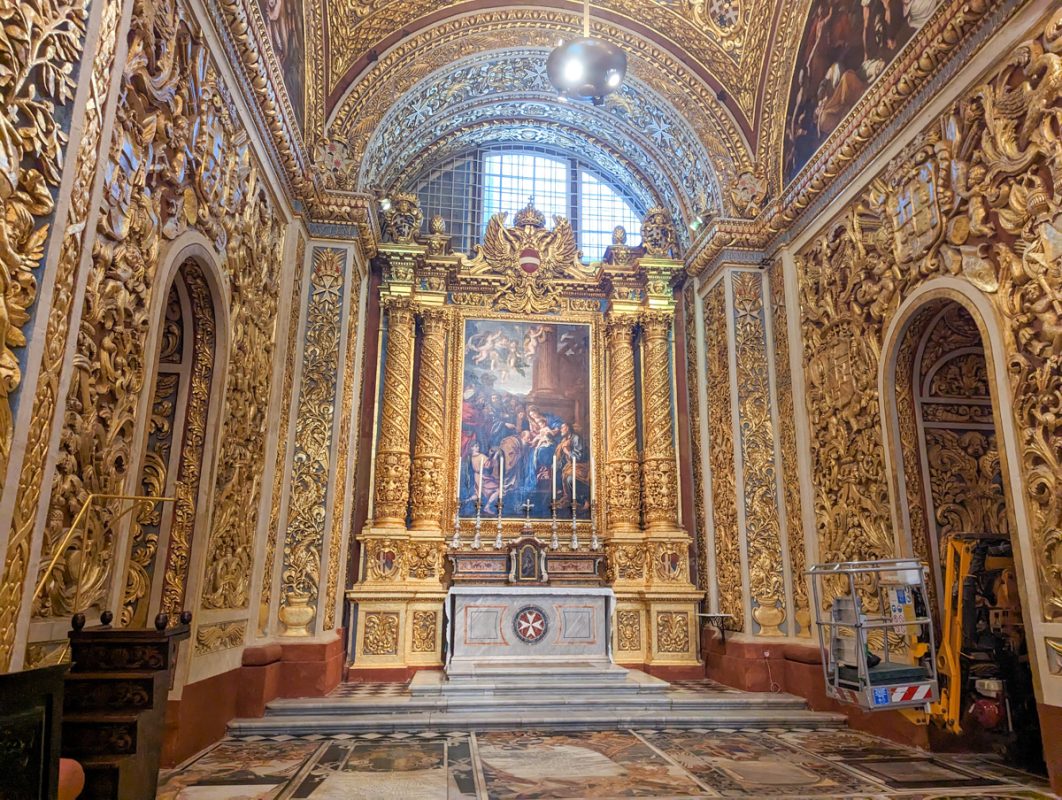
March signifies the build-up to Easter, which in Malta, can be as exciting as the holiday itself.
Thanks to Malta’s deeply-rooted Catholic traditions, the island becomes a hive of activity during this time.
Local parishes begin to organise processions and pageants, often involving community members of all ages.
The processions are solemn yet beautiful, while the pageants offer a visual retelling of the Easter story. In homes, families start to prepare Figolli, traditional Easter almond biscuits.
Often shaped like symbolic figures such as lambs or fish, these sweet treats are decorated with icing and a small chocolate egg.
And then there are the churches – all 359 of them.
They undergo a transformation as they get adorned with purple banners and decorations to mark the period of Lent.
It all culminates in the vibrant celebrations of Holy Week and Easter Sunday, which falls in late March in some years.
Best things to do in Malta in March
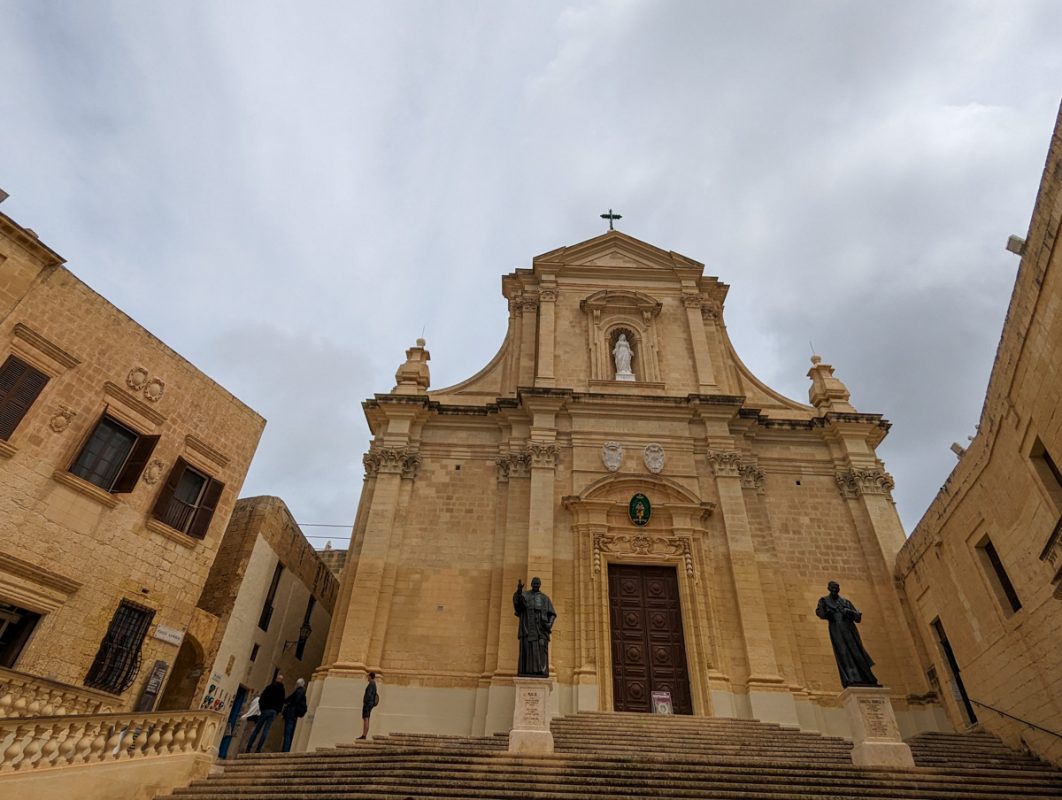
So, what are the best things to do in Malta in March? Check out my full Malta in winter guide for a full explanation, but here are some things that you could relish while you’re here.
- Explore the ancient city of Mdina.
- Walk around the historic city of Valletta.
- Visit St. John’s Co-Cathedral.
- Explore the Three Cities – Birgu, Senglea, and Cospicua.
- Take a boat tour of the Blue Grotto.
- Visit the ancient Ggantija Temples on Gozo.
- Enjoy the Feast of St. Joseph festivities in Rabat.
- Wander around the old fishing village of Marsaxlokk.
- Hike from Dingli Cliffs to the Blue Grotto.
- Visit the Hypogeum, a unique subterranean structure.
- Watch the spring migration of birds.
- Enjoy the colourful sight of wildflowers in bloom.
- Go wine tasting at a local vineyard.
- Take a dip in the Mediterranean (if you’re brave enough!).
- Attend a Good Friday procession.
- Explore the Grand Harbour by boat.
- Take a day trip to Gozo and explore its rural charm.
- Visit the National Museum of Archaeology in Valletta.
- Witness the Easter preparations and decorations across the islands.
Are you ready to visit Malta in March?
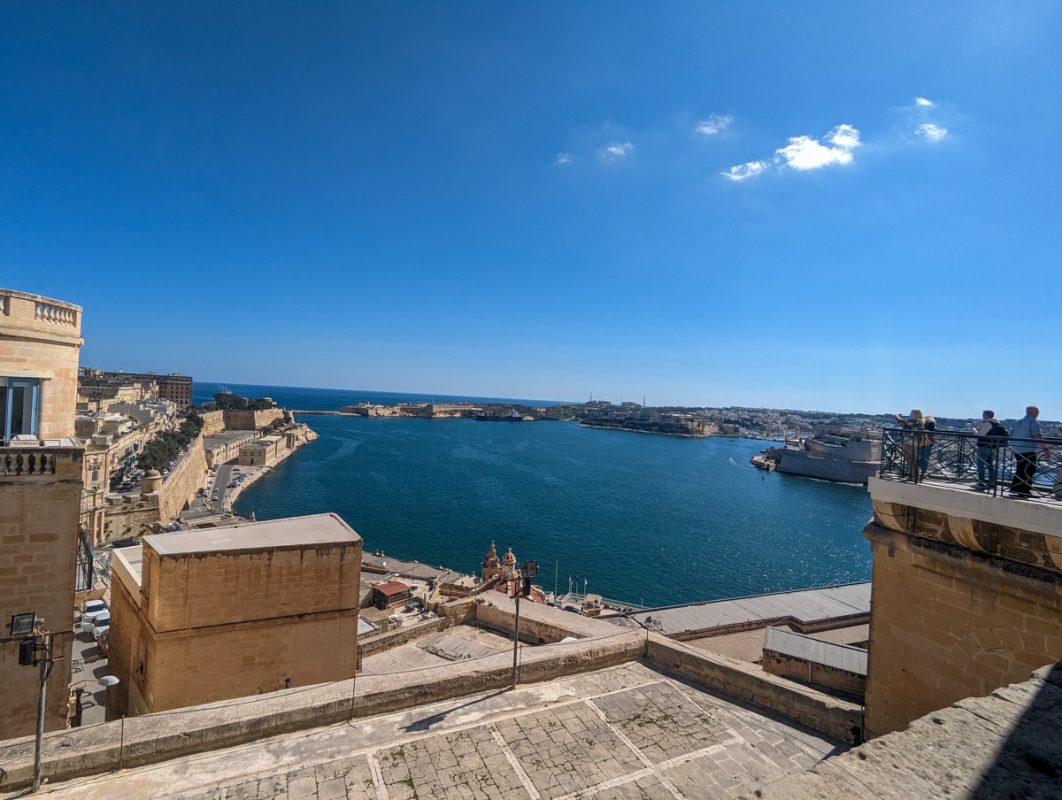
Blending mild weather, fewer crowds, outdoor adventures and the culture surrounding Lent, Malta in March is a delight.
If you’re looking for some winter sun to see off the end of the cold season, there’s nowhere better than this tiny nation in the Med!

